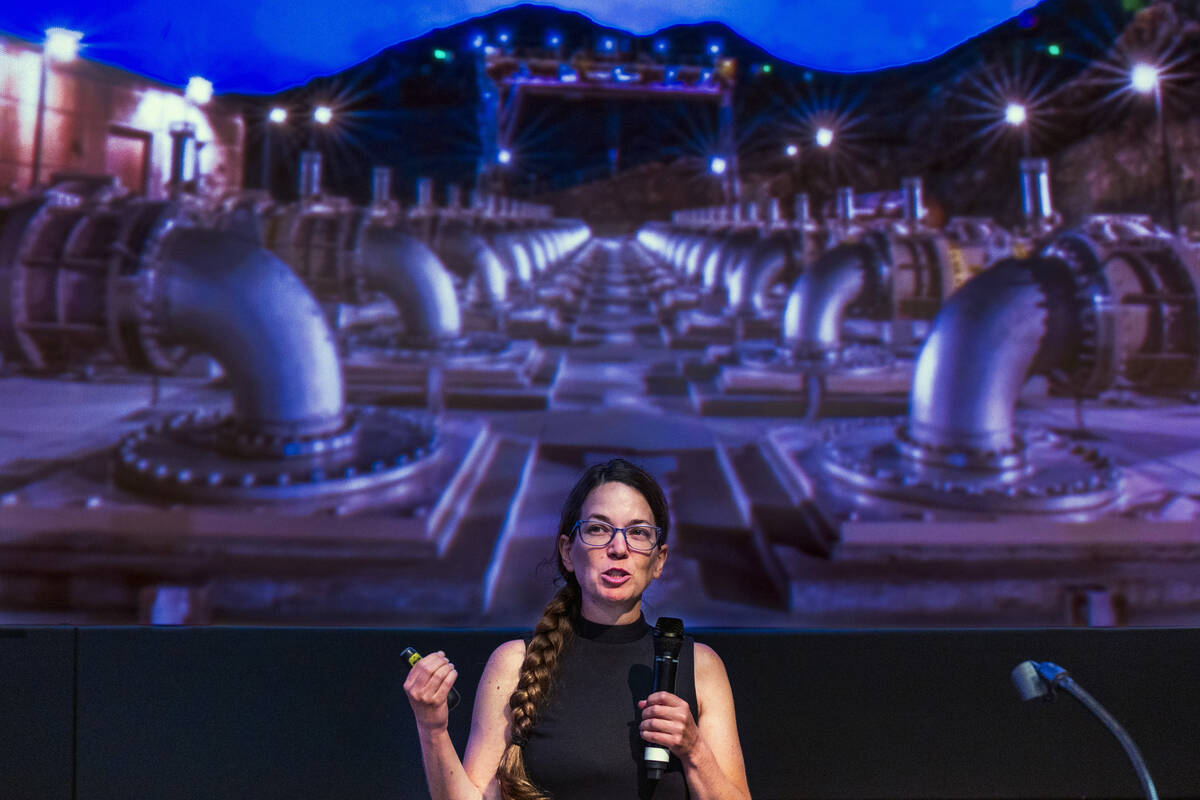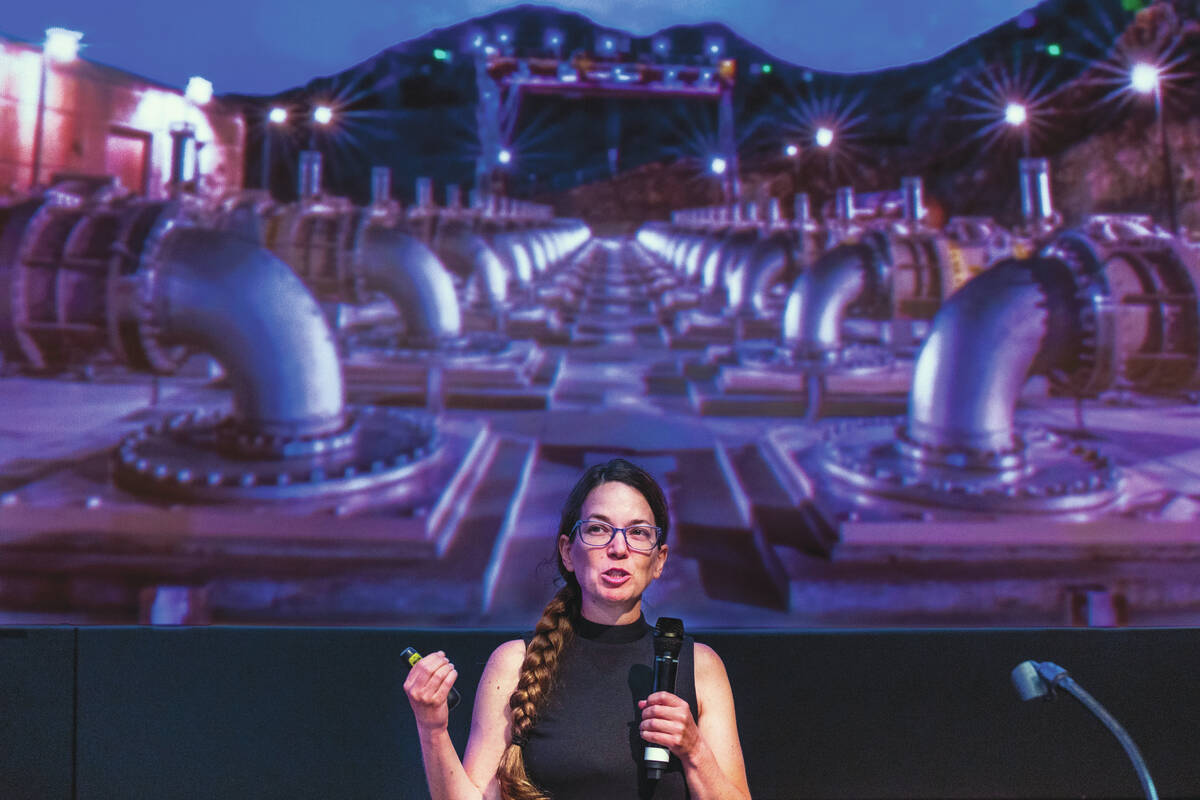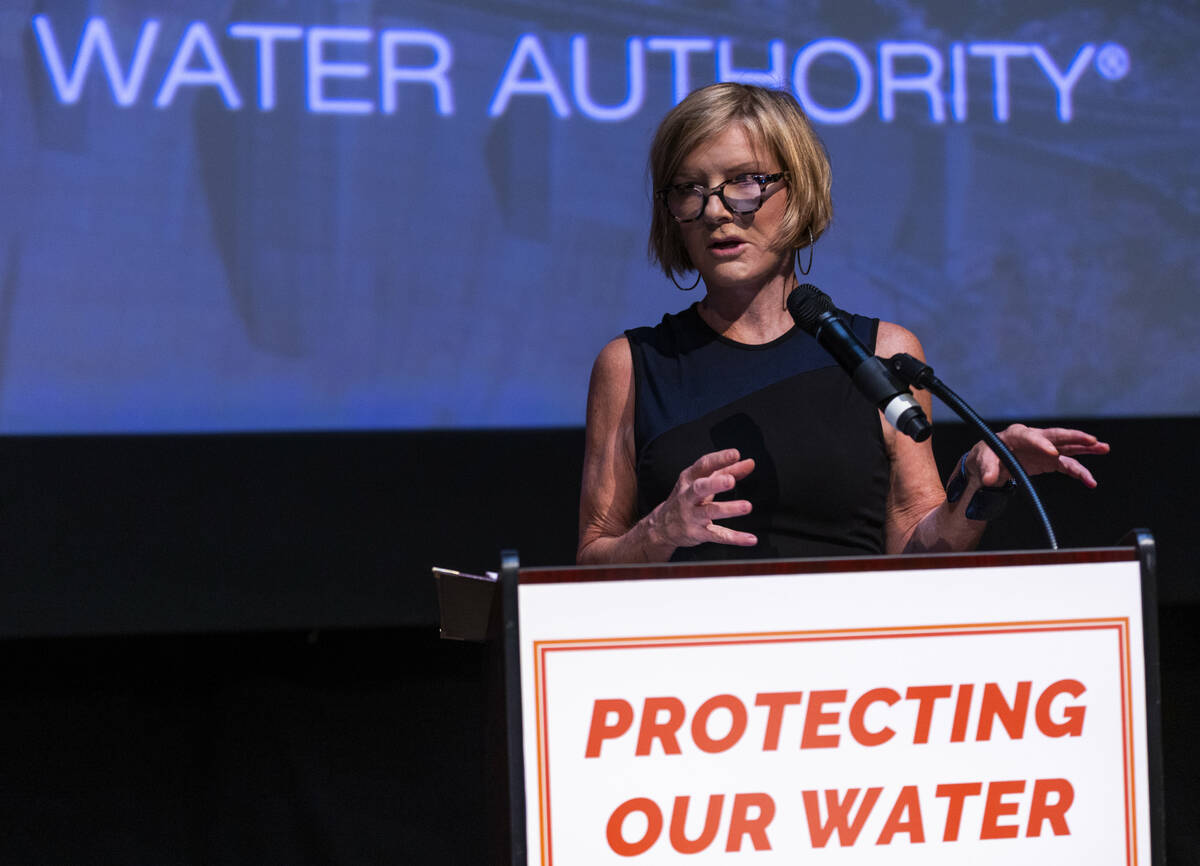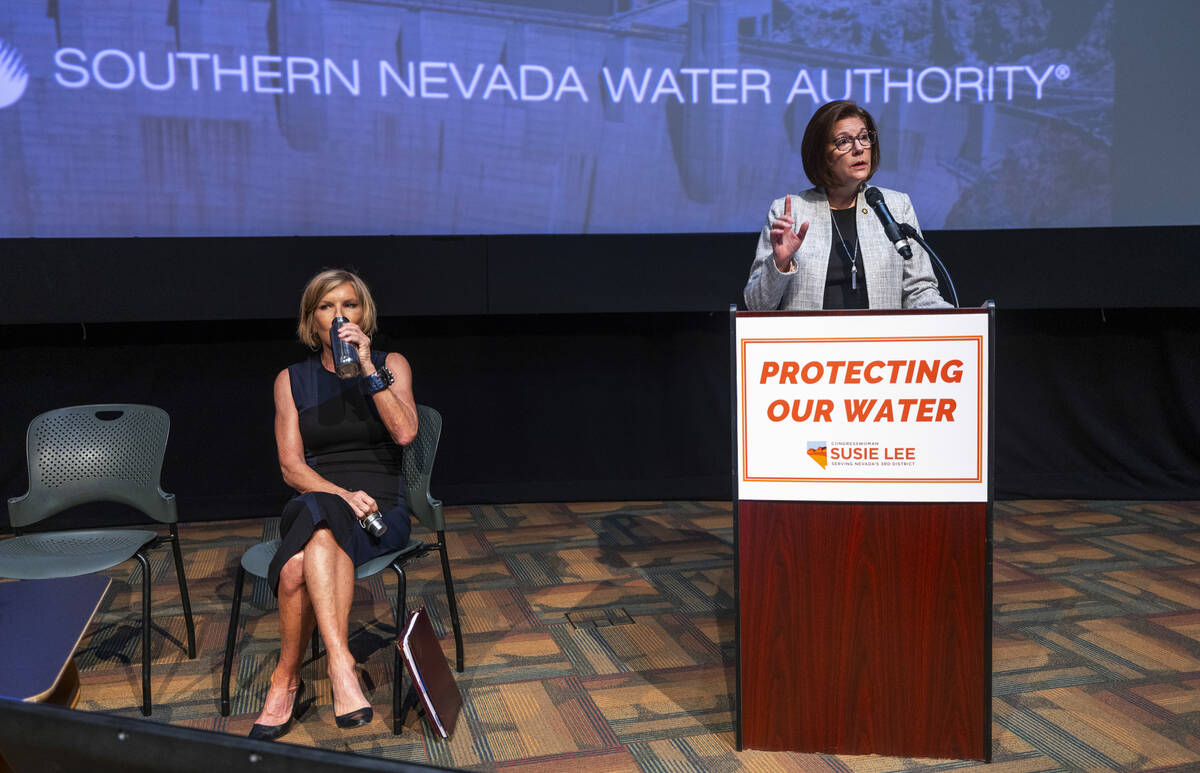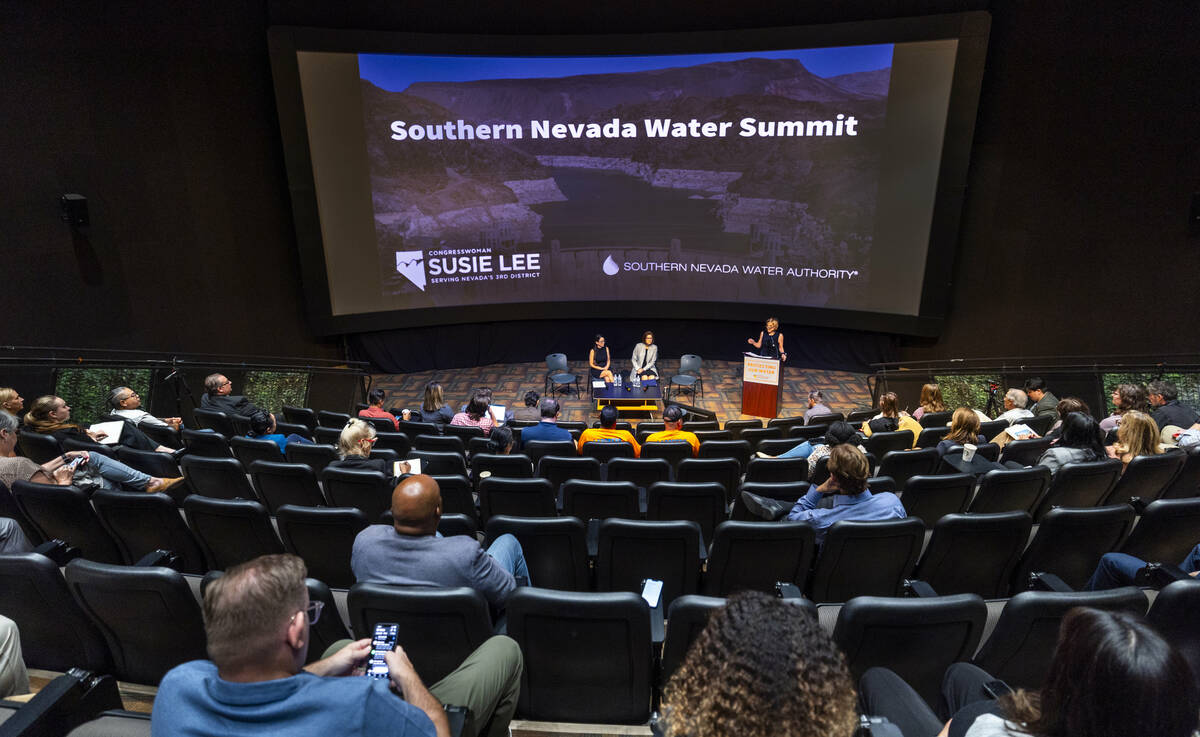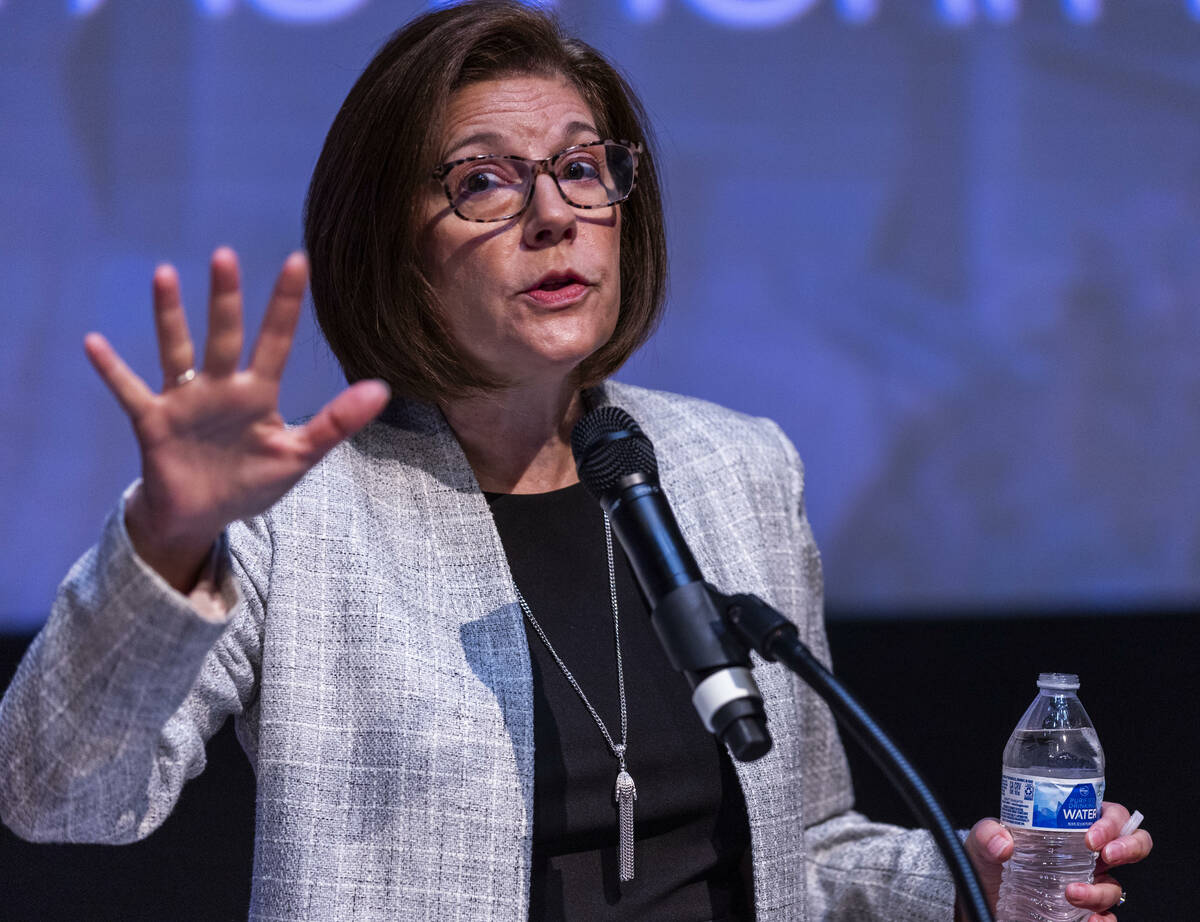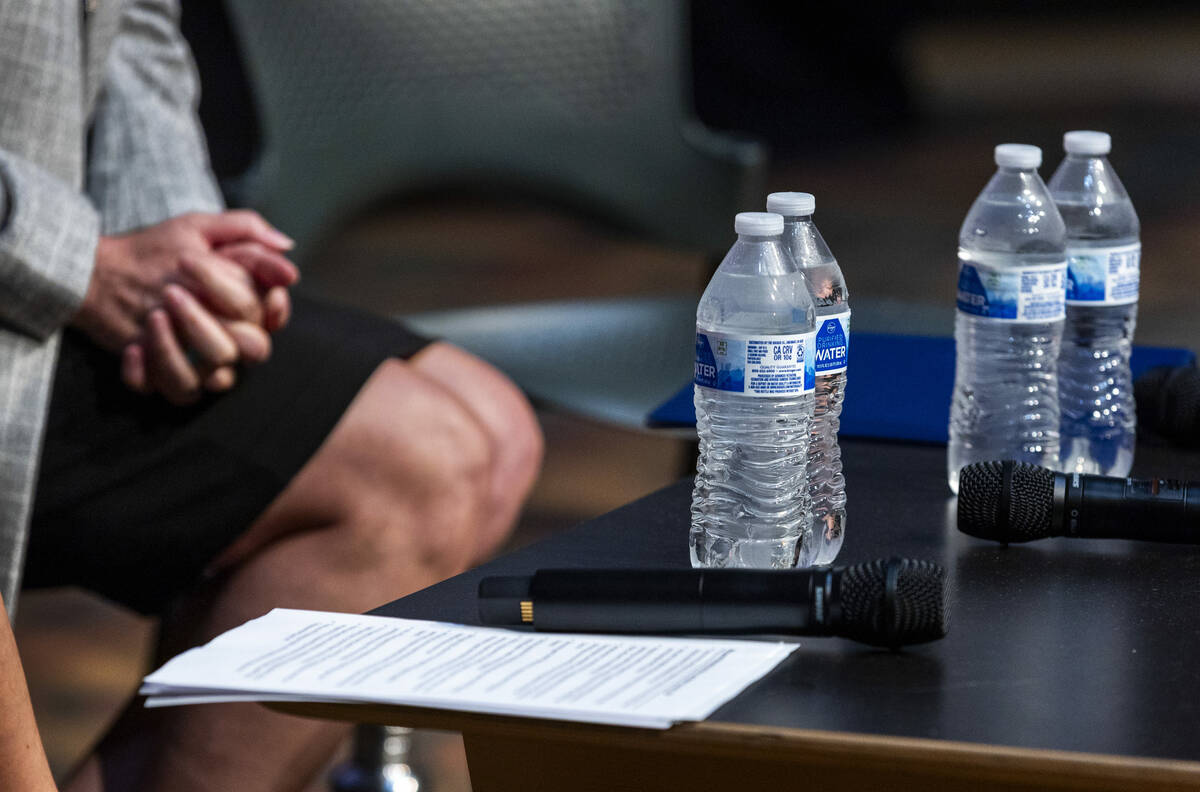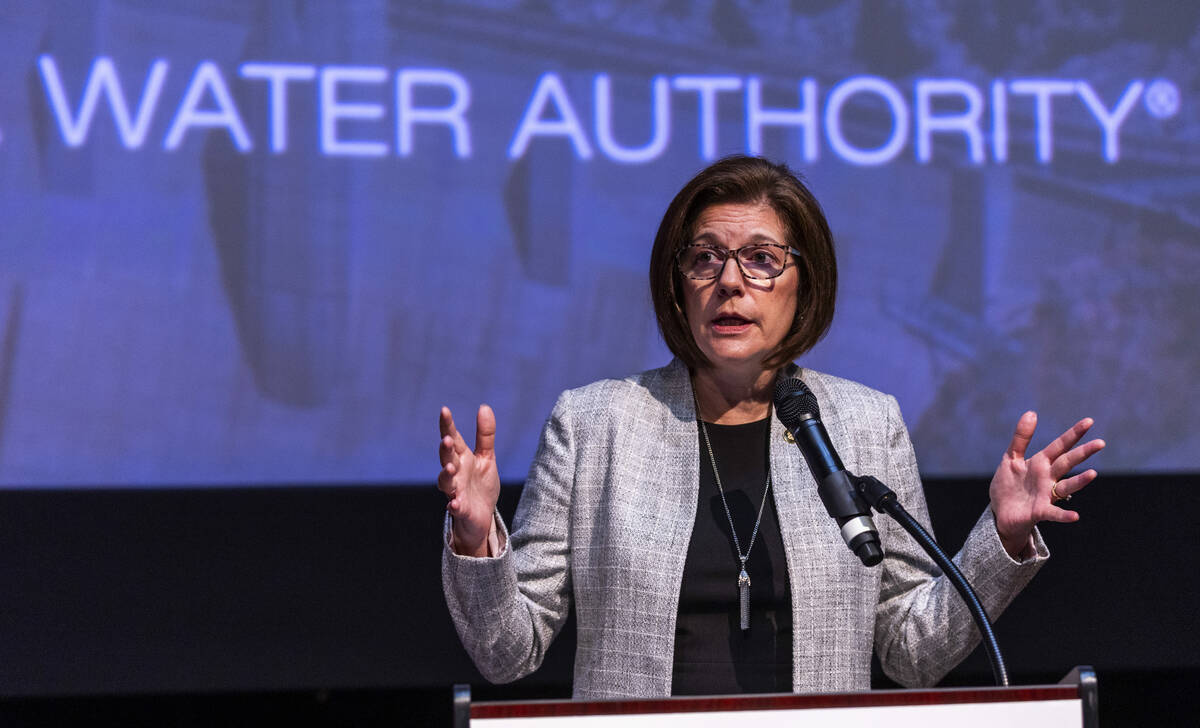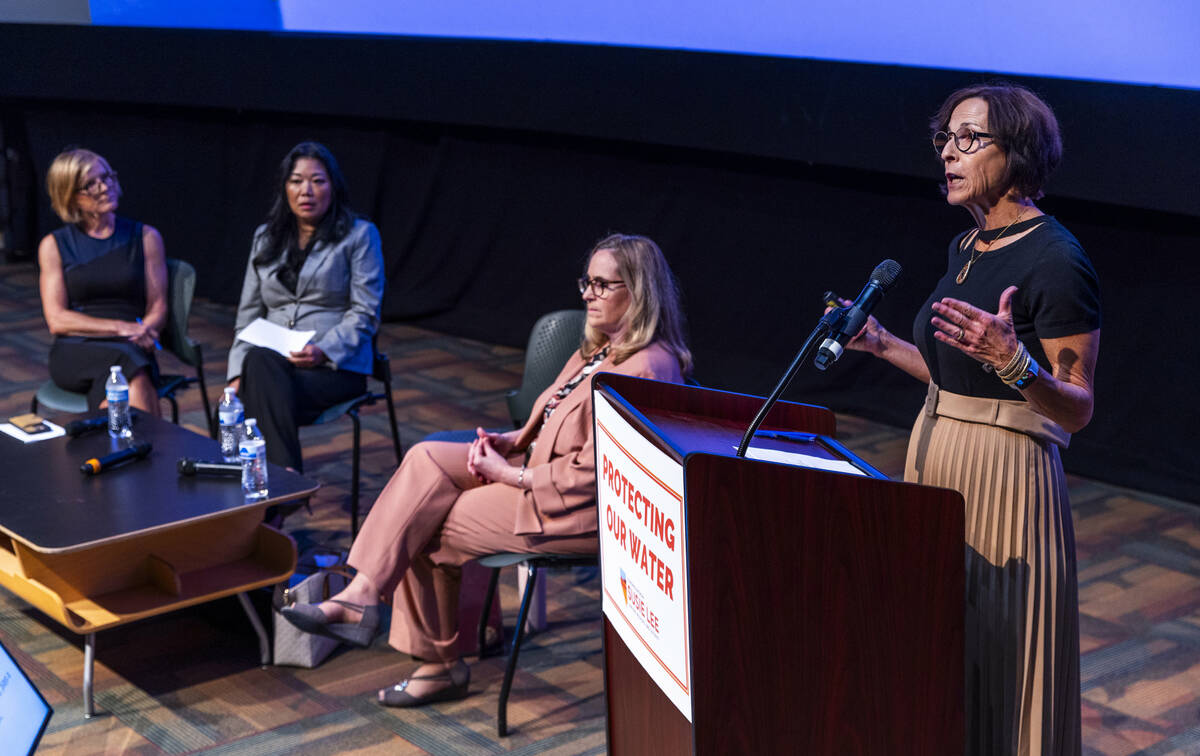‘It’s crunch time’ to save Lake Mead as negotiations stall, Nevada leader says
Lake Mead is the foundation for life in Southern Nevada, but it’s clearer than ever that the Colorado River system is headed for turbulence.
In addition to water, time is in short supply to strike a seven-state consensus deal for the Colorado River, said Rep. Susie Lee, D-Nev., on Thursday at her third annual Southern Nevada Water Summit.
The most recent projection for Lake Mead shows the reservoir dropping below its historic lows by summer 2027, a fact underscoring the idea that all 40 million people that the Colorado River serves will need to live with less.
“It’s crunch time for the negotiators,” Lee told the crowd of about 50. “There’s a lot of places where I don’t see eye to eye with this current administration, but we do agree on this much: The best path forward for the Colorado River system is one that is jointly chartered and agreed upon by the basin states and the tribes, not one that is imposed upon us living in the West by Washington, D.C.”
Lee hosted her summit at Springs Preserve on Thursday morning to discuss the most pressing issues regarding Las Vegas’ tiny share of the Colorado River. She was joined by U.S. Sen. Catherine Cortez Masto, D-Nev.; Colby Pellegrino, Southern Nevada Water Authority deputy general manager; the Colorado River Commission of Nevada; and UNLV startup WAVR Technologies.
The interstate negotiations Lee spoke of have been ongoing for years, as the 2007 guidelines for the river expire at the end of 2026. Behind closed doors, seven state representatives are racing against the clock to find common ground between two coalitions of states, the Upper and Lower Basins.
Interior Secretary Doug Burgum, who oversees the federal Bureau of Reclamation, has indicated that he will decide for the states if they cannot agree to a deal — a move that experts have said would almost certainly lead to a long legal battle.
“I’ve been a part of every river deal that’s happened on this river since 2006, and this chapter is really hard when we look at where our reservoirs are today,” Pellegrino said.
Federal funding cleared
Among the more interesting takeaways of the summit was that the water authority’s federally funded projects are moving ahead without issue.
When President Donald Trump took office, he initiated a review of all the government’s spending, sending shock waves down to some agencies with projects reliant on federal grants — including the water authority.
“I will admit, with candor, that there was a bit of a fire drill at the beginning of making sure we identified every single project we were working on that had federal funding associated with it,” Pellegrino said.
Notably absent from the summit was the Bureau of Reclamation, whose commissioner attended the summit last year and gave the press a rare opportunity to ask questions. That former commissioner, native Las Vegas resident Camille Calimlim Touton, was in the audience on Thursday, however.
Though the Trump administration named Western water insider and Arizonan Ted Cooke as its pick for commissioner this summer, the nomination has made no progress in the U.S. Senate, despite the intensifying dealmaking process.
Since those early days of the administration, Pellegrino said, federally funded projects in Southern Nevada and across the Colorado River Basin are continuing. For instance, a $60 million investment to fund Southern Nevada’s grass conversion program is flowing, as is another project to boost water quality treatment.
In her remarks, Cortez Masto said water conservation must continue regardless of partisan politics.
“It is not something where one administration comes along, works on it, then we started fresh on another administration,” Cortez Masto said. “I don’t care what your party line is. I don’t care what administration is in office. It needs to be consistent that we’re working on and building upon and moving forward to address the needs of the Colorado River.”
Murky waters ahead
No one is quite sure if the states will agree before mid-November, when Burgum has indicated he would need at least the bullet points of a preliminary, consensus-based plan. February is when Burgum wants it finalized.
Pellegrino confirmed that all seven states are still mulling what some have called a “divorce” concept, where a natural flow measured at Lees Ferry in Arizona would determine how much water is released from Lake Powell into Lake Mead.
While no details are available about what a release structure would look like at this point, Pellegrino praised the natural flow idea as a good one, based on how much water is actually available in the system — which won’t be much.
“It really gets to the heart of, we are going to have a wildly variable supply,” Pellegrino said. “We don’t know how to do the limbo. We don’t know how low we can go. The percentage-based supply really helps stay true to what Mother Nature is providing us.”
“We’ve got a long way to go to see if we can agree on the details,” Pellegrino added.
Contact Alan Halaly at ahalaly@reviewjournal.com. Follow @AlanHalaly on X.
Time to change the clocks — water ones, that is
It's that time again when valley residents are required to shift their lawn watering to match the Southern Nevada Water Authority's mandatory schedule.
The effort is part of a larger set of rules implemented throughout the years to reduce so-called "consumptive" use of water, or the water that isn't kept in the Lake Mead system through recycling.
Between Monday and Oct. 31, residents are limited to watering on three assigned days a week, which they can find at snwa.com. Water cops, or the agency's enforcement division, patrol the valley to ensure water waste is kept to a minimum.
The agency's recommendations to keep water bills low in the fall include only watering drip-irrigated plants and trees twice a week, refraining from watering during windy days and watering in early morning hours through October to reduce water lost to evaporation.



